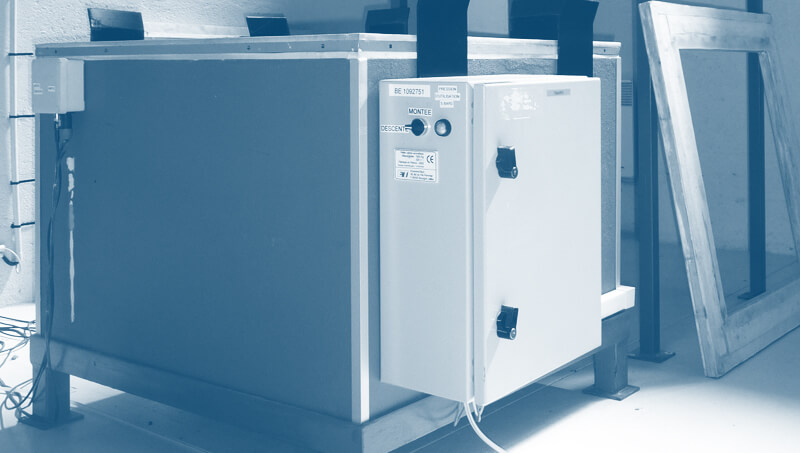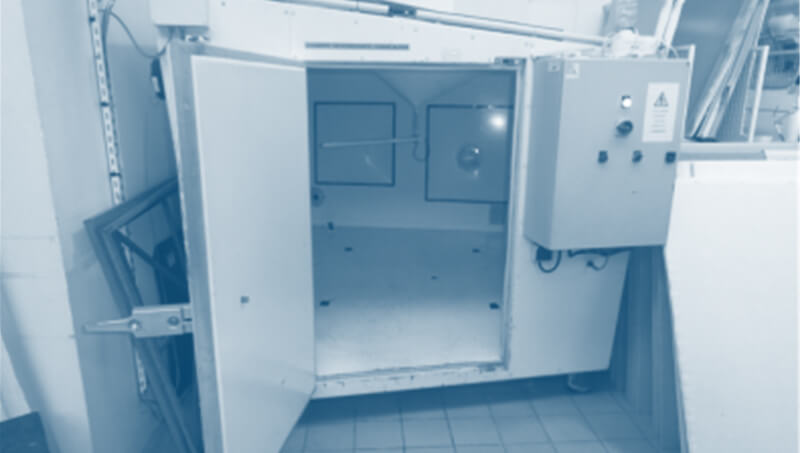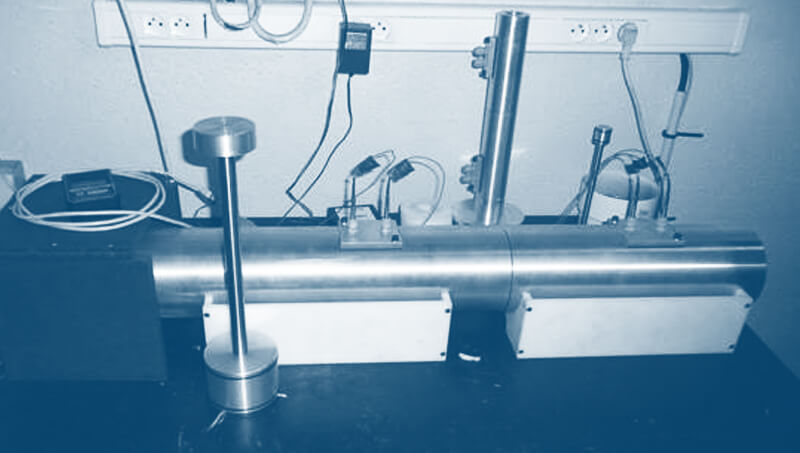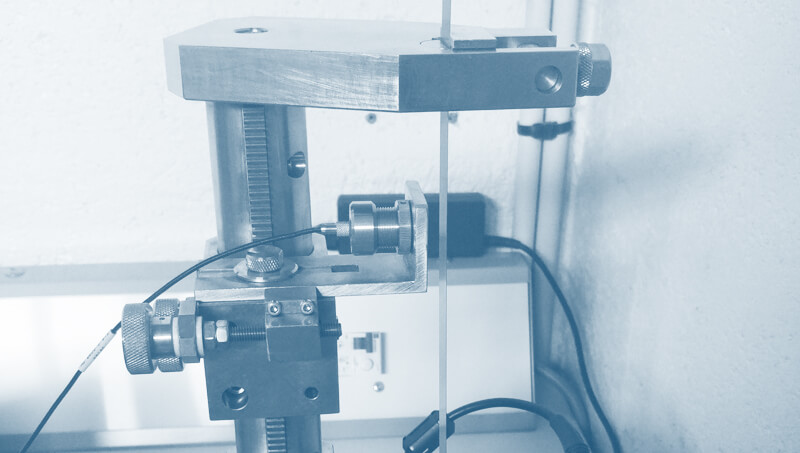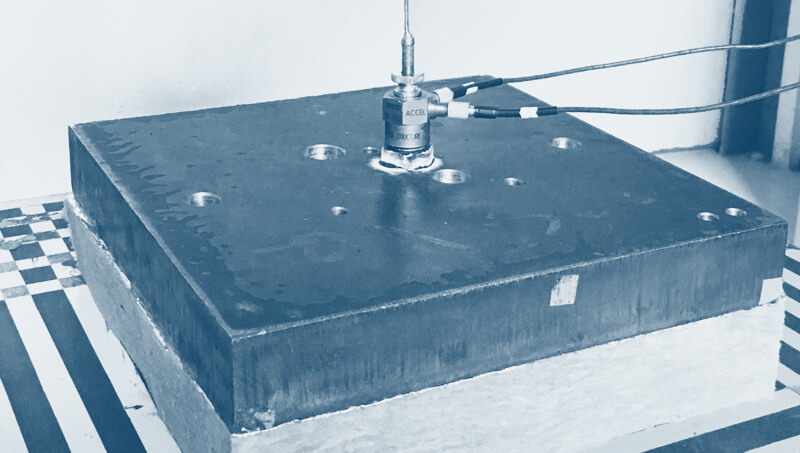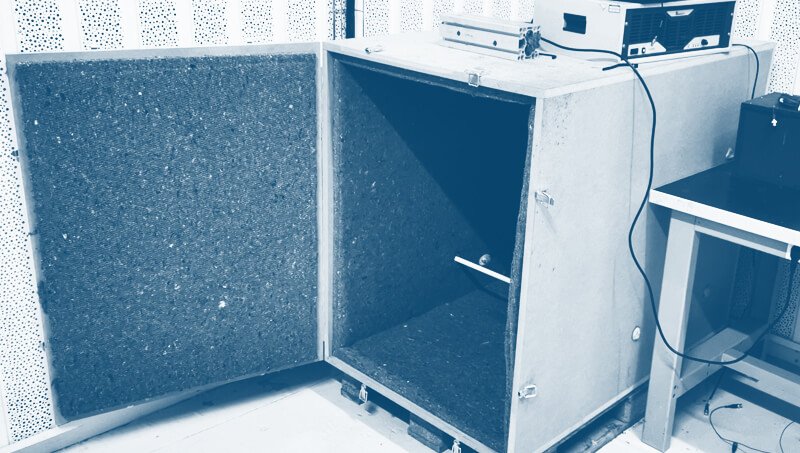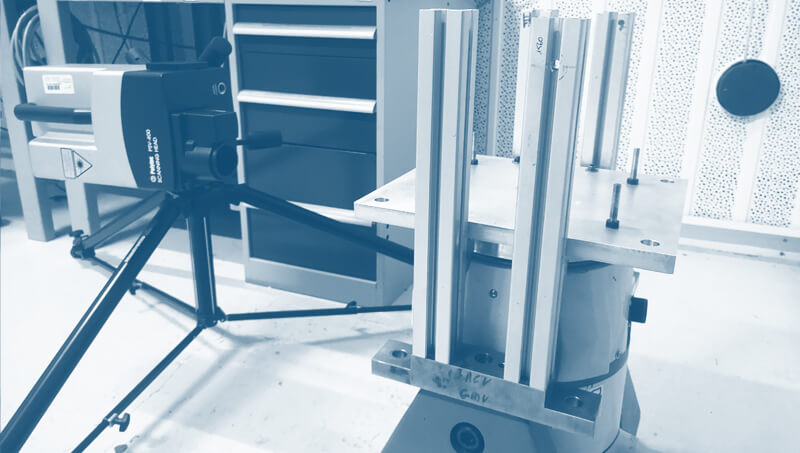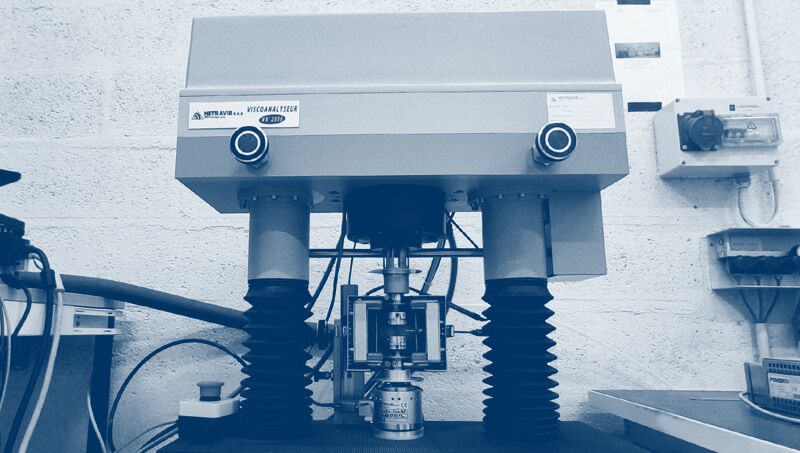Insertion loss measurement
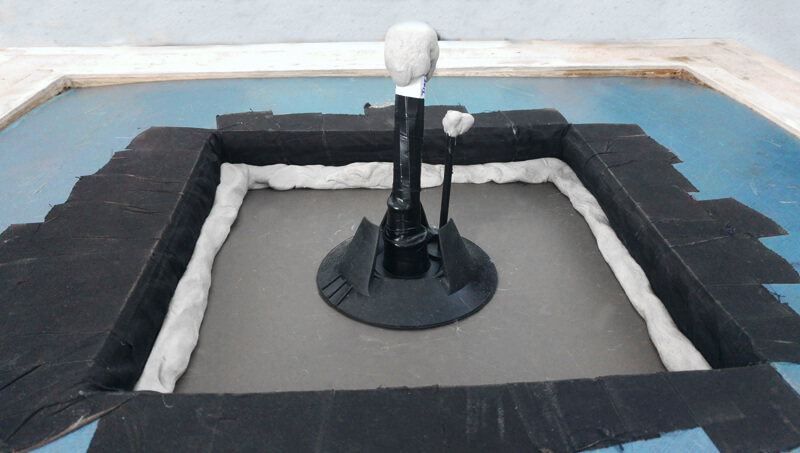
CEVAA measures the insertion loss of materials to determine their sound insulation performance.
Insertion loss measurement
For acoustic insulation, measuring a material’s insertion loss (IL) quantifies its effectiveness in attenuating the sound passing through it. This property expresses, in decibels, the difference in sound level before and after the addition of the material. Thus, a high insertion loss means better insulation performance. This measurement is crucial for selecting materials suited to the desired noise reduction objectives in a given space.
The CEVAA measures insertion loss using the small cabin. This is a special bench with a source cavity and a receiver cavity. The tested parts are located at the interface of these two cavities.
We thus measure the difference in sound pressure level between two configurations: a reference configuration and a configuration with the tested sample.
Determination of the insertion loss of a virtual prototype
Deck penetration suppliers often have to test several prototypes, made from combinations of different geometric configurations and/or different materials. This can quickly lead to prohibitive development times and costs to meet the manufacturer’s performance requirements. One way to speed up and secure the development of a deck penetration is to use the determination of the insertion loss of a virtual prototype. For this, the CEVAA developed a finite element model of the small cabin and correlated it with experimental measurements of the insertion loss for different types of deck penetrations.Automotive and transportation applications
Sound insulation in the engine compartment is an important factor in vehicle NVH comfort. The bulkhead is the main transmission path for engine noise to the passenger compartment, whether for a combustion engine or an electric motor.
For this reason, car manufacturers’ acoustic specifications for the bulkhead are becoming increasingly stringent, particularly for feed-throughs for various equipment and components (cables, steering column, brake booster, gearbox controls, etc.).
Insertion loss (IL) is one of the main indicators used to determine the acoustic performance of bulkhead feed-throughs.
Insertion loss calculation
P1 and p2 are respectively the transmitted pressure measured in the cavity when receiving the first configuration and the second configuration. P0 is the reference pressure and it is equal to 20 μPa. IL is always expressed in dB.
The higher the IL, the better the acoustic performance of the tested sample.
Materials characterization benches
For more information, contact our teams!

